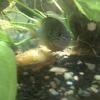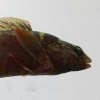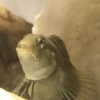I'm planning a trip to visit a friend in North Carolina sometime to go sampling/collecting. We've been trying to pick a spot, though it's been hard as I can't find a good list of what species are generally found in brackish water. While while the main reason for the trip is to visit my friend and learn more about the native fish of North Carolina, I had a few fish that if possible I'd like to collect and send back to my house in California. Spotted hake (Urophycis regius), Southern Hake (Urophycis floridana), and Inshore lizardfish (Synodus foetens) are the main fish I'm looking for and considering for a larger mid-high end brackish water aquarium. I also have heard River Goby (Awaous banana) have been recorded in NC, though some websites seem to say it was only 1 specimen that was found that far north. I've done some fish sampling as part of a class before, but this is my first time doing it in freshwater/brackish water so I'd consider myself new to this.
Any tips or advice for collecting?
What species here found in brackish water?
Good spots to look?
Does brackish water spots usually fall under freshwater or saltwater regulations?
anyone have care experience with Spotted hake (Urophycis regius), Southern Hake (Urophycis floridana), or Inshore lizardfish (Synodus foetens)?
Thanks for the help and sorry for all the questions










